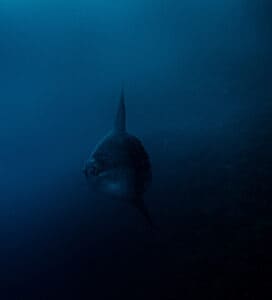Our oceans are home to 99% of the living space on our planet. So it’s no surprise that two of the most interesting creatures on Earth—the olive sea snake and the hagfish—make their homes in entirely different parts of the ocean. The olive sea snake (Aipysuris laevis) is a member of the Elapidae family of snakes. Hagfish are members of the Infraphylum Agnatha; there are around 70 living species of hagfish known to science.
Read on to learn more about what differentiates an olive sea snake from a hagfish.
Comparing Olive Sea Snake vs Hagfish
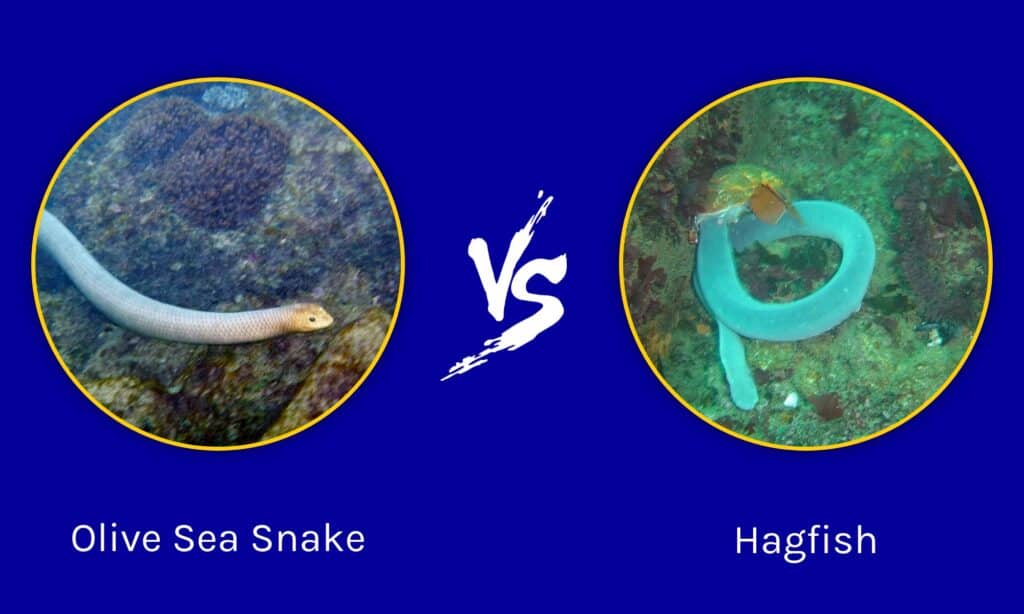
| Olive Sea Snake | Hagfish | |
|---|---|---|
| Size | Up to 6 feet long | 16-32 inches long |
| Appearance | Medium weight body with a flattened tail for swimming; gray to olive green in color | Pale pink-gray, tubular bodies with no eyes. Flattened tails for swimming |
| Location and Habitat | Western Pacific Ocean; coral reefs | All of the world’s oceans; deep, cold ocean floor |
| Behavior | Nonaggressive; inquisitive | Produces slime as a means of self-defense |
| Lifespan | 15-20 years | Estimated 40 years |
Key Differences Between Olive Sea Snake vs Hagfish
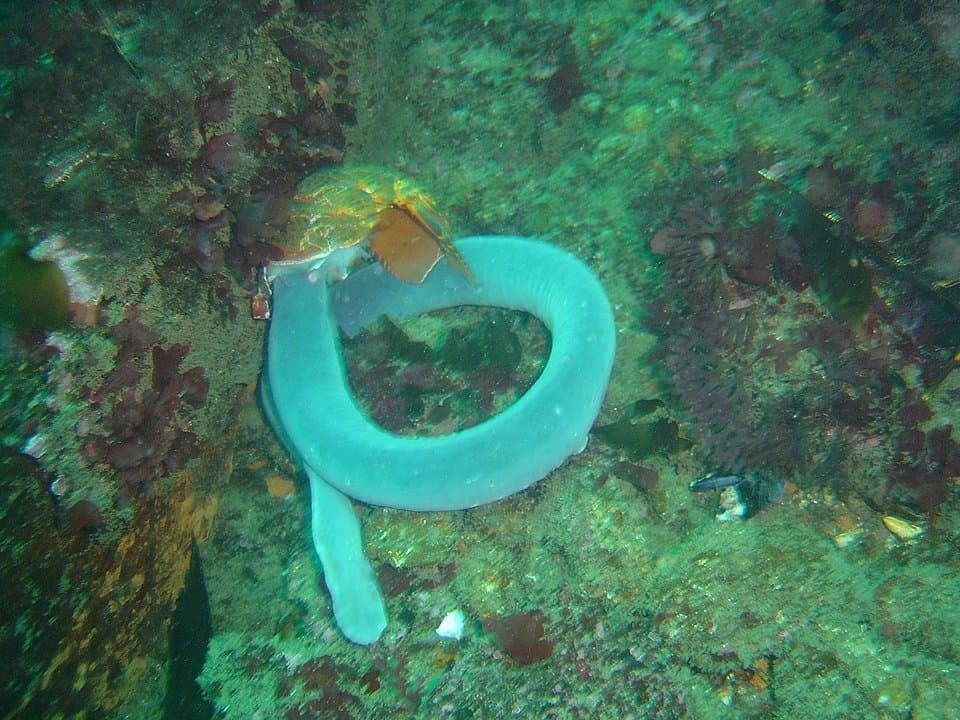
Hagfish live on the deep ocean bottom.
©Peter Southwood / CC BY-SA 3.0 – License
The key difference between the olive sea snake and the hagfish is that olive sea snakes are reptiles, and hagfish are fish. Olive sea snakes breathe air, whereas hagfish breathe water. Hagfish live on the murky ocean bottom and have no jaws, whereas olive sea snakes live among coral reefs and have jaws. Olive sea snakes are venomous hunters, while hagfish consume only the dead and small invertebrate creatures.
Let’s take a closer look at the exact differences between the olive sea snake and the hagfish.
Olive Sea Snake vs Hagfish: Size
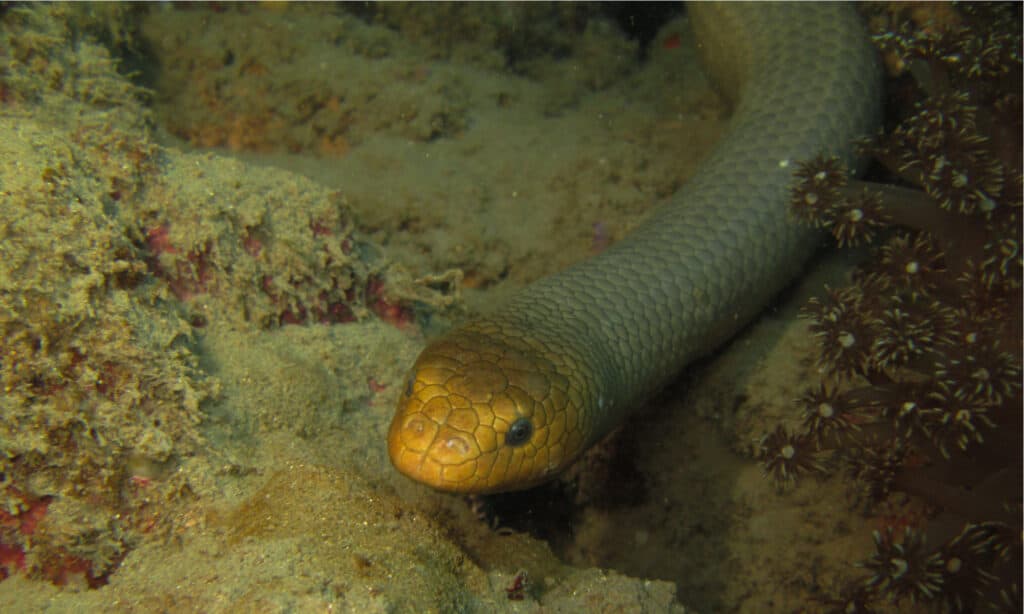
There is only one species of olive sea snake, which can grow to over six feet long.
©DNC40/Shutterstock.com
Olive sea snakes grow to just over six feet long for the largest individuals. They have medium-weight bodies. There are around 70 different species of hagfish, with some growing to just over a foot long. The largest hagfish in the world grow to around 45 inches long.
Olive Sea Snake vs Hagfish: Appearance
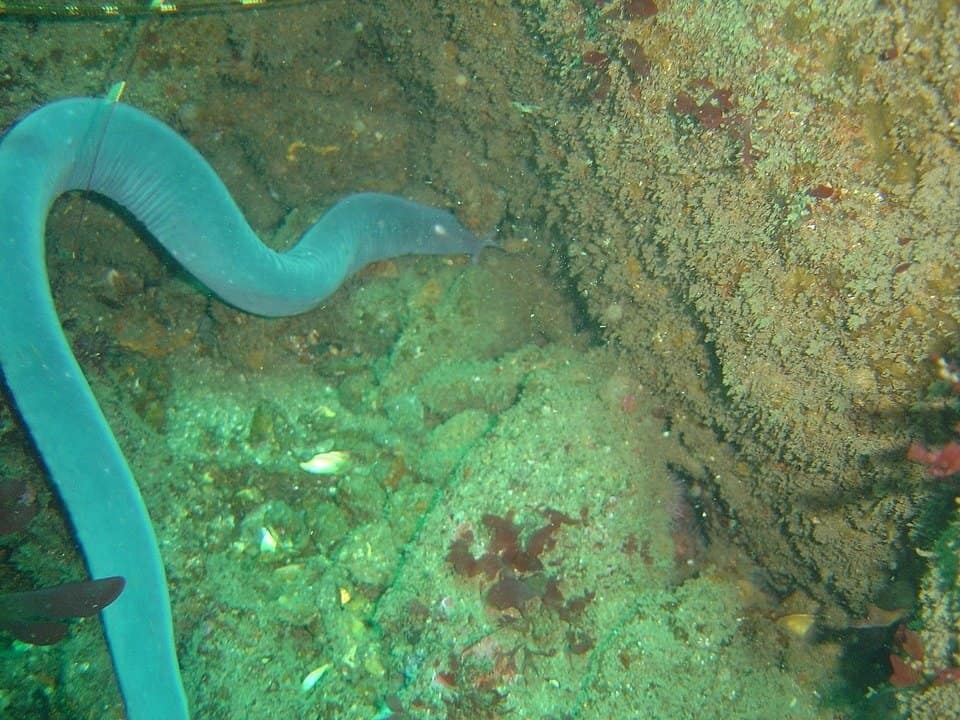
The hagfish lack eyes.
©Peter Southwood / CC BY-SA 3.0 – License
Olive sea snake and hagfish superficially resembles one another. Both are tubular creatures living in the ocean. However, that’s where the resemblance stops. Olive sea snakes have visible eyes, mouths, jaws and look like snakes with flattened, rudder-like tails. Hagfish, on the other hand, look like large, gray worms with small antennae on either side of their head. They’re the only creatures on Earth who possess a skull but no vertebral column.
Olive sea snakes are dusky tan to olive green in color, with pale bellies. Their heads are the same thickness as their bodies, which are streamlined for ocean travel. Hagfish also have flattened tails for swimming. They have eye dots but no actual eyes.
Olive Sea Snake vs Hagfish: Location and Habitat
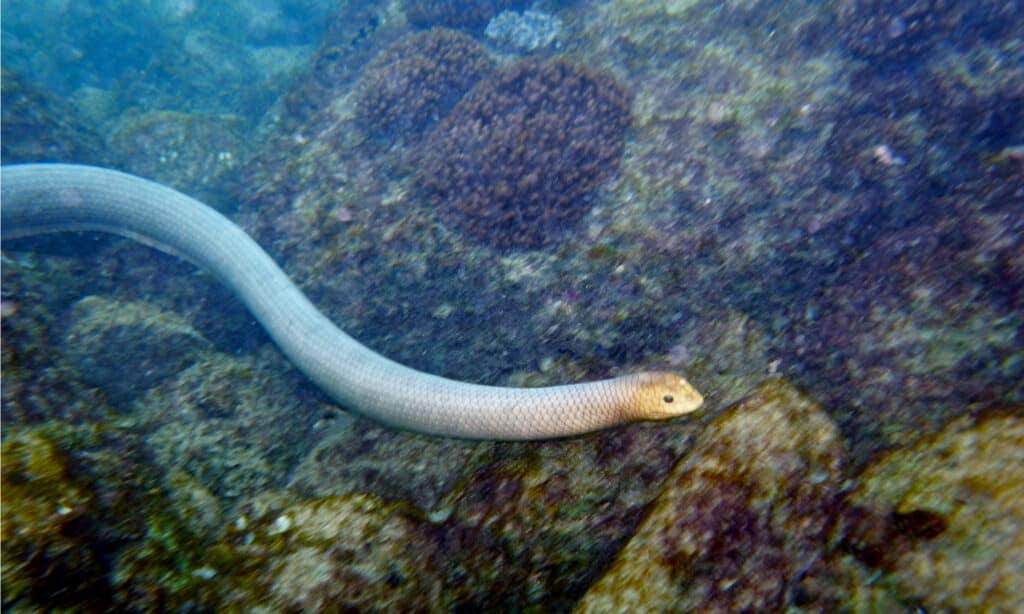
Olive sea snakes occur only in the tropical western Pacific Ocean.
©Sahara Frost/Shutterstock.com
One of the biggest differences between the olive sea snake and the hagfish is where they live. Olive sea snakes occupy the warm tropical waters of northern Australia and New Guinea. There, they spend their lives hunting in coral reefs; they’re found nowhere else on Earth.
In contrast, hagfish are plentiful throughout the world’s oceans. But, they’re almost never seen by humans. This is because hagfish live only in deep, cold parts of the ocean. Some species live near shore; fishermen sometimes drag them in with their catch.
Olive Sea Snake vs Hagfish: Behavior
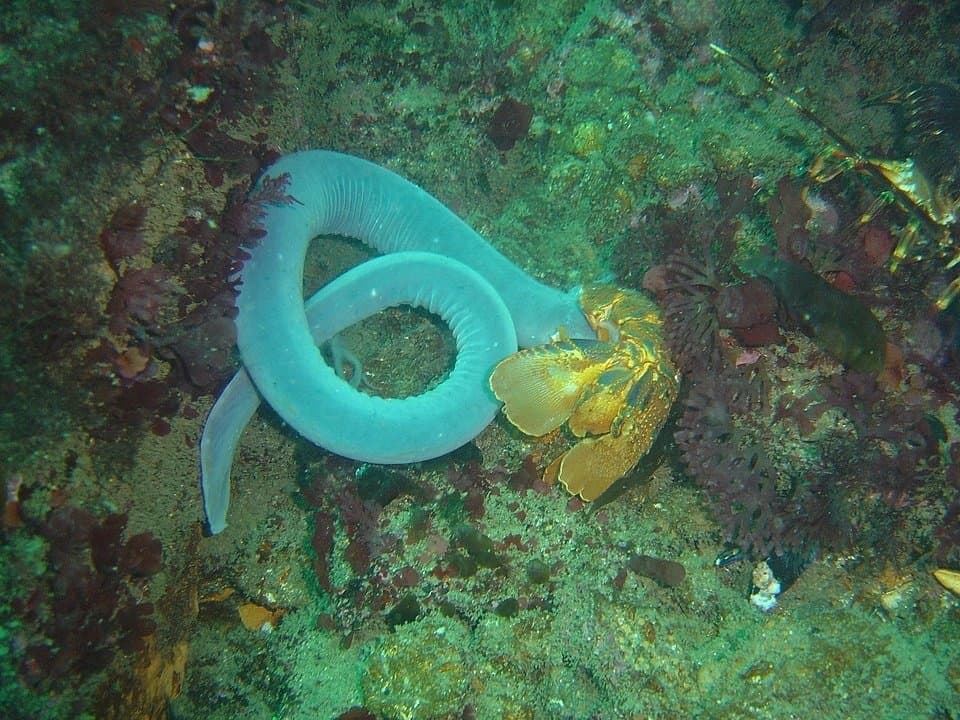
Hagfish mainly consume already deceased creatures and small invertebrates.
©Peter Southwood / CC BY-SA 3.0 – License
Olive sea snakes are one of the only snakes on Earth that never come to land. Most sea snakes live in the ocean but come to land to lay their eggs. Not the olive sea snake. These truly aquatic snakes give birth at sea and never touch land. They’re highly venomous and are known to be curious about scuba divers. Bites to humans are very rare but can be life-threatening. Olive sea snakes eat small fish, fish eggs, and crustaceans.
Little is known about the reproductive methods of hagfish, other than they do appear to lay eggs. These creatures have also been known to bore holes in the sides of fish stuck in fishing nets, even while they’re still alive. On the ocean floor, they perform a vital service: cleaning up the dead. When threatened, they excrete a thick slime from pores in their body. The slime deters would-be predators.
Olive Sea Snake vs Hagfish: Lifespan
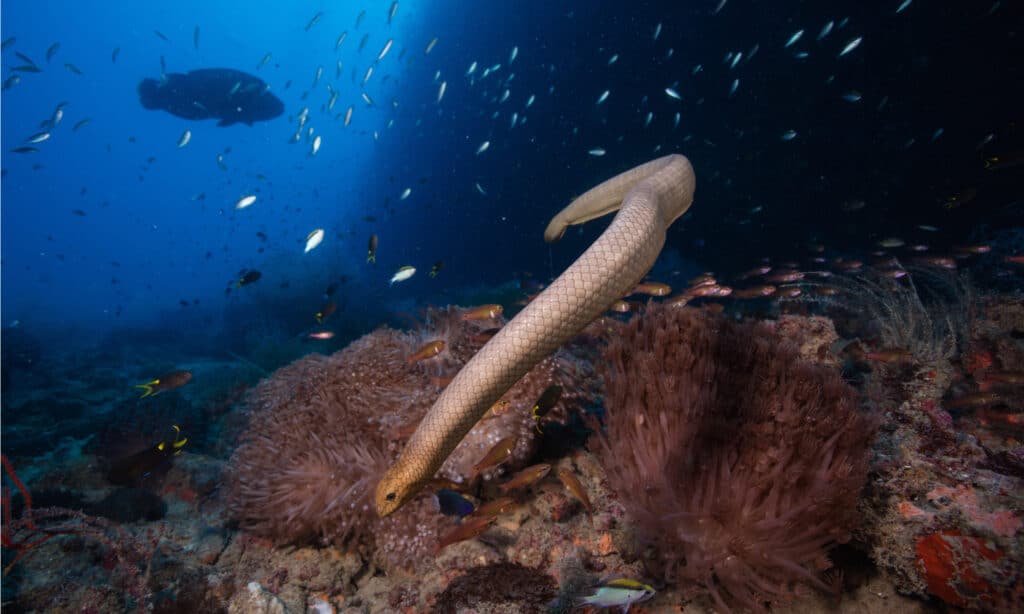
Olive snakes can live up to 20 years.
©Gabriel Guzman/Shutterstock.com
These sea snakes are thought to live up to 20 years in the wild, a venerable age for a snake. Hagfish, on the other hand, have been recorded living up to 17 years in captivity. In the wild, however, they’re thought to live for around 40 years. But, little is known about the lifecycle of the wild hagfish, so they could live much longer than scientists think.
The photo featured at the top of this post is © DNC40/Shutterstock.com
Thank you for reading! Have some feedback for us? Contact the AZ Animals editorial team.





